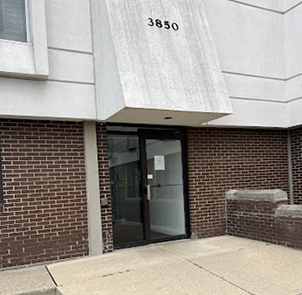How Do You Calculate Emotional Pain And Suffering In A Pedestrian Accident?
Every year, negligent drivers injure thousands of pedestrians across the United States. In 2020, 6,516 pedestrians lost their lives on the roads. To make matters worse, pedestrian accidents are on the rise. These accidents also tend to have more severe injuries because pedestrians are the least protected road users. Is it any wonder that so many survivors experience emotional pain and suffering?
What Is Emotional Pain and Suffering?
This refers to the stress and upsets that you experience after an accident. Emotional distress can include the following:
- Anxiety, depression or despair
- Anger or rage
- Loneliness or isolation
- Loss of companionship
- Loss of enjoyment
- Loss of mobility or personal independence
The emotional pain and suffering you experience will depend on several factors. These include how the accident happened, what kind of injuries you sustained and how long it took to recover.
What Factors Do Attorneys Consider When Calculating Emotional Pain and Suffering?
There are two main types of damage. Economic damages follow a linear calculation path. Attorneys can review receipts or use simple calculations to arrive at hard numbers regarding how much you should receive. Emotional pain and suffering are much more difficult to calculate. Measures can vary across law firms, but most attorneys have one goal: to get you the maximum compensation possible.
The Severity of Physical Injuries
The more serious your physical injuries, the higher your emotional pain and suffering should be. Courts tend to give special consideration to cases involving disfigurement, loss of limbs or disabilities. The severity of the injury will help prove the level of impact it had on you and your family.
Emotional Impact
If you have moderate injuries but have difficulty functioning normally after an accident, you may seek compensation to cover that amount of emotional stress. Your attorney may take into account the quality of life that you had before the accident and then subtract that from how it has affected your ability to function normally. This is a good model for calculating emotional pain and suffering.
Health Care Expenses
Emotional distress can also increase medical expenses. Treatment costs can rise significantly if you end up in a hospital because of severe physical injuries and have difficulty coming to terms with them. This isn’t an easy loss to calculate, but if you have seen a rise in expenses since the accident, your attorney can use this as evidence of emotional pain and suffering.
What Are Some Forms of Proof of Emotional Pain and Suffering?
Some cases have obvious, high levels of pain and suffering. For example, few persons would question this in a case involving a pregnant woman who lost her child, broke her legs and experienced severe brain trauma. However, it might be more challenging to prove in someone who broke an arm and had a few lacerations. Here are some ways attorneys bolster this part of a claim.
Video Recordings of the Incident
Even if victims escape with fewer injuries than other persons, the accident itself could be terrifying. Sometimes, video footage from CCTV cameras or dashcams is the only way to prove this. Your attorney might have access to this footage.
Emotional Support From Family and Friends
Few people go through significant accidents alone. Suppose a close friend or family member has been present during your recovery. In that case, he or she may make statements about the emotional toll on you. He or she can also discuss how this has affected the rest of the family or social group.
Medical Records of Physical Injuries
Physical injuries are likely to be supported by medical records. Few people will doubt the mental stress that accompanies severe physical injuries. The treatment process can also contribute to this. For example, extended periods in a hospital or painful procedures.
Psychological Evaluations
Your attorney might sometimes recommend a psychological evaluation after an accident. This can help diagnose any psychological disorders that result from the injuries and provide more proof of emotional distress. The insurance company might also insist on a psychological evaluation by a doctor of their choosing.
What Is the Multiply By 3 Method for Calculating Pain and Suffering?
The multiply-by-three method is one of the most commonly used ways to calculate pain and suffering. This approach takes your economic damages and triples them, adding in additional compensation for things like emotional distress.
However, not all courts agree on the concept of multiplying the economic damages. Some law firms also use other multipliers, usually within the 1.5 to 5 range. In other cases, the law firm might use automated and complex algorithms to determine a number.
Emotional distress can have a significant impact on a pedestrian accident case. If you have experienced severe physical injuries and ongoing emotional pain because of an accident, contact an attorney to help you get maximum compensation for your losses.
How Does Emotional Pain and Suffering Differ From Punitive Damages?
Punitive damages are also given to accident victims to punish the responsible party for their actions. On the other hand, compensation for emotional pain and suffering is meant to cover the type of mental distress you feel due to an injury-related incident. While both types of damage often go hand in hand, they can differ significantly in how much compensation you receive.
Another difference is that your attorney may actively seek emotional pain and suffering as part of your compensation. However, punitive damages are usually awarded at the discretion of the court. Consequently, emotional pain and suffering could add tens of thousands to your case. In contrast, punitive damages can lead to hundreds of thousands or millions.
Punitive damages tend to accompany cases with high levels of negligence. For example, maybe the driver had too much to drink or was driving recklessly at the time of the accident. The court might also consider punitive damages if the driver has a poor driving record, has previously received no harsh penalties and has shown no indication of changed behavior.
How Can an Experienced Personal Injury Lawyer Help?
An experienced attorney knows more than just the applicable law in your area. He or she is also familiar with how negotiations tend to play out and how courts rule based on specific facts. This knowledge and firsthand experience put the attorney in an excellent position to estimate the case’s total value.
Your attorney should also have the resources necessary to investigate what happened and gather more evidence to build a strong case. For example, he or she might consult medical experts to determine the type and degree of your physical injuries. He or she might also use the results of your psychological evaluation.
When choosing an attorney to represent you, make a choice based on more than just years of experience. Consider what the attorney has accomplished during their careers and whether those results are satisfactory. Past results do not dictate future ones, but they illustrate a trend.
At Mike Morse Law Firm, we have recovered more than $1.5 billion in compensation for our clients. It starts with a free case evaluation where we review all the details and determine a suitable approach for gathering more evidence and building a case that holds up in negotiations and court. Contact us to get started.









